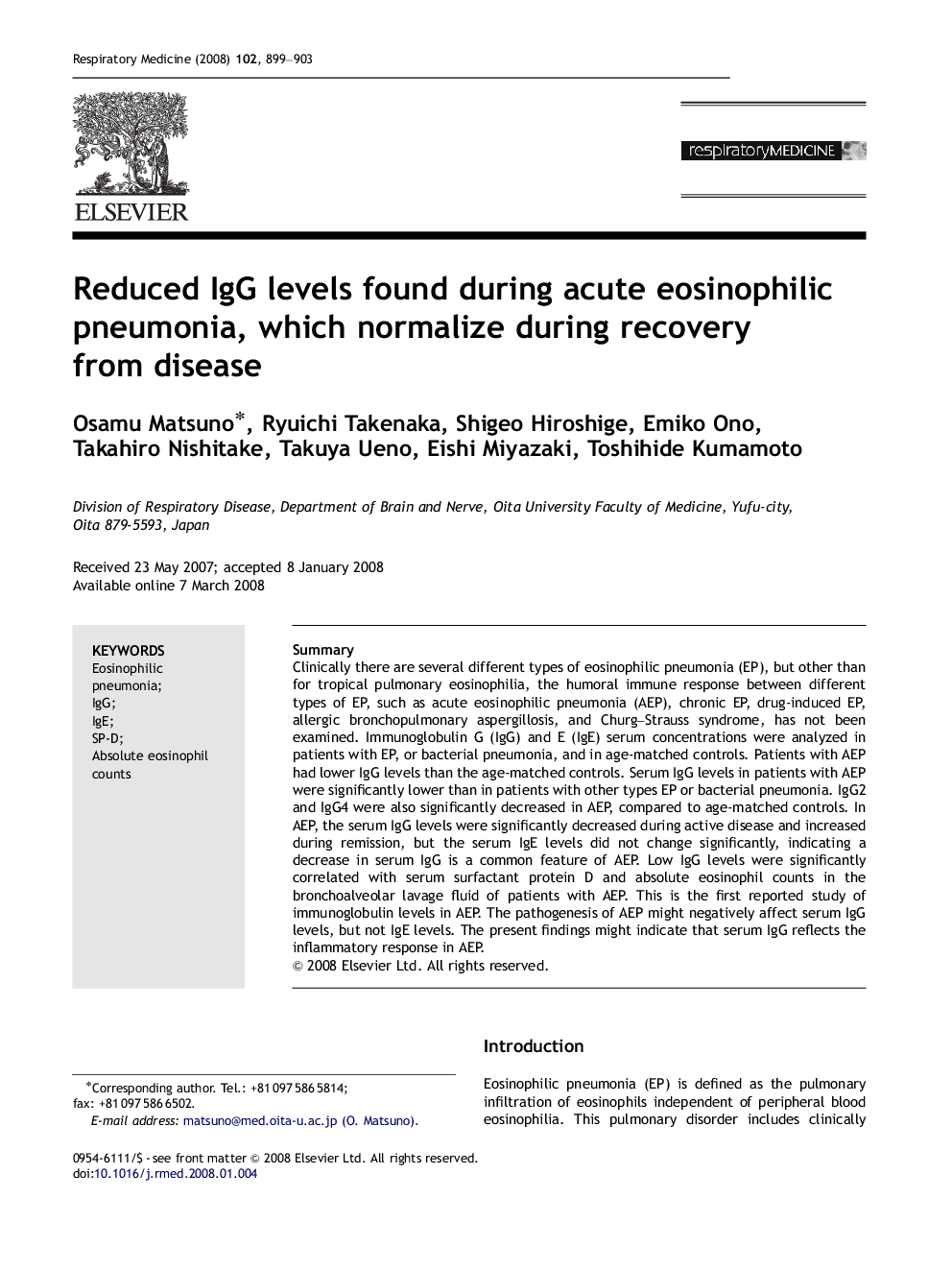| Article ID | Journal | Published Year | Pages | File Type |
|---|---|---|---|---|
| 4212407 | Respiratory Medicine | 2008 | 5 Pages |
SummaryClinically there are several different types of eosinophilic pneumonia (EP), but other than for tropical pulmonary eosinophilia, the humoral immune response between different types of EP, such as acute eosinophilic pneumonia (AEP), chronic EP, drug-induced EP, allergic bronchopulmonary aspergillosis, and Churg–Strauss syndrome, has not been examined. Immunoglobulin G (IgG) and E (IgE) serum concentrations were analyzed in patients with EP, or bacterial pneumonia, and in age-matched controls. Patients with AEP had lower IgG levels than the age-matched controls. Serum IgG levels in patients with AEP were significantly lower than in patients with other types EP or bacterial pneumonia. IgG2 and IgG4 were also significantly decreased in AEP, compared to age-matched controls. In AEP, the serum IgG levels were significantly decreased during active disease and increased during remission, but the serum IgE levels did not change significantly, indicating a decrease in serum IgG is a common feature of AEP. Low IgG levels were significantly correlated with serum surfactant protein D and absolute eosinophil counts in the bronchoalveolar lavage fluid of patients with AEP. This is the first reported study of immunoglobulin levels in AEP. The pathogenesis of AEP might negatively affect serum IgG levels, but not IgE levels. The present findings might indicate that serum IgG reflects the inflammatory response in AEP.
